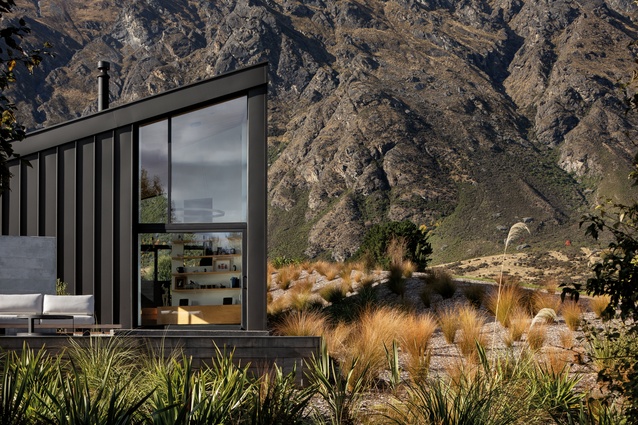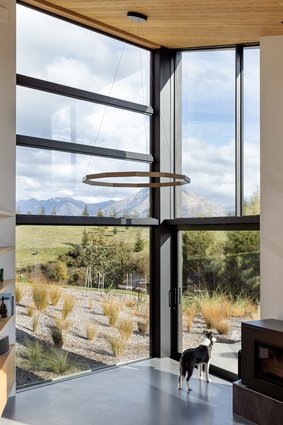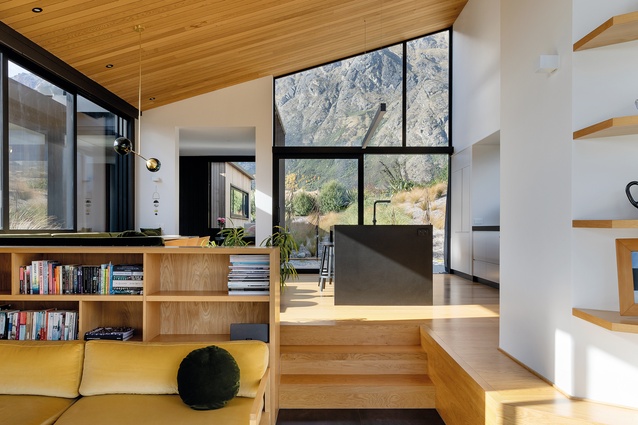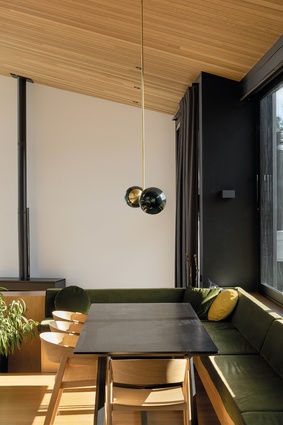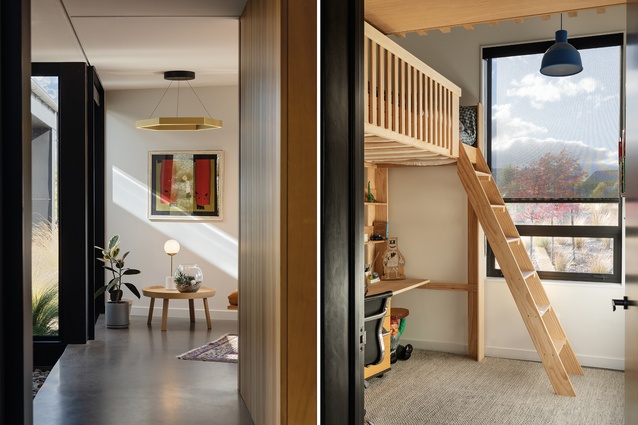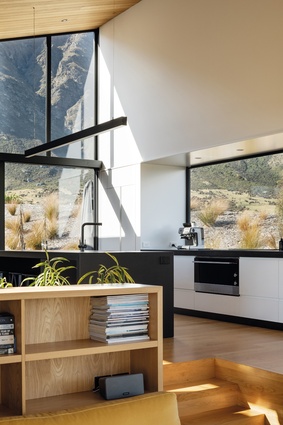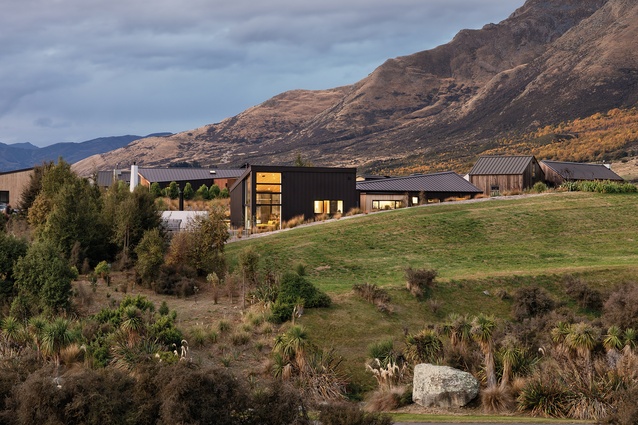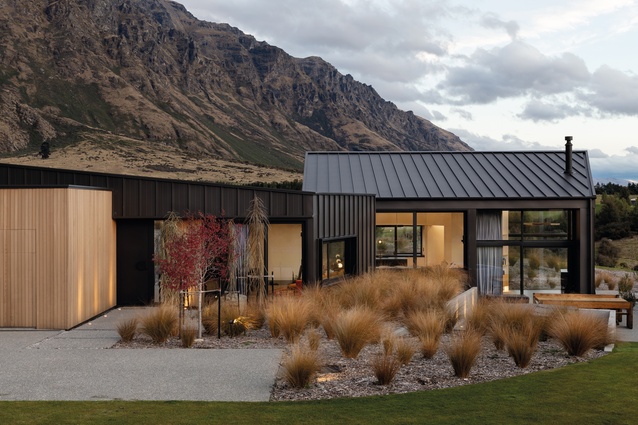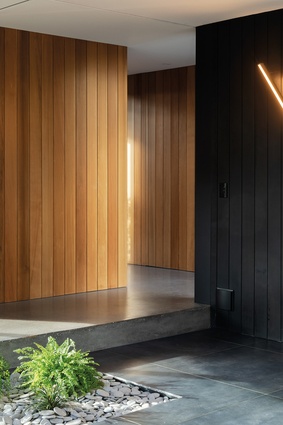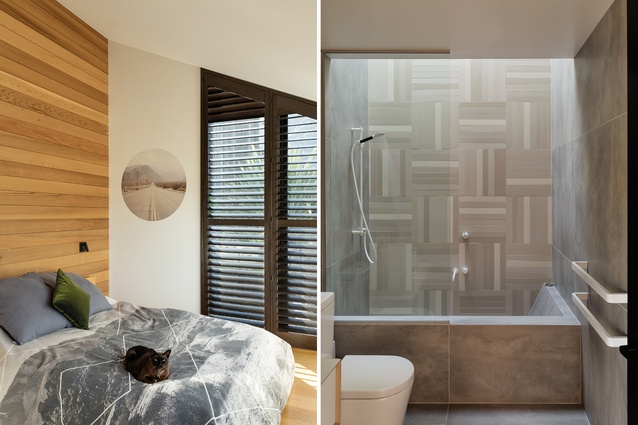Elemental: Jack’s Point house
This home is at ease within the rugged nature of Queenstown’s landscape.
The Queenstown neighbourhood of Jack’s Point is spoiled when it comes to views. The Remarkables show the full reason for their name: postcard face to the east, and other peaks and hills in all the glorious shades of Otago can be seen in every direction.
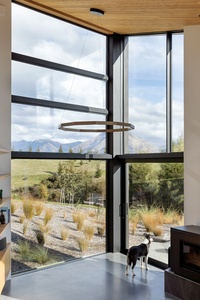
Designed by Hyndman Taylor Architects, this Jack’s Point house is crouched low on its site in order to maintain privacy from its neighbours, and shaped to capture as many different views as possible, both from indoors and from the outdoor rooms that adjoin the living space. Vistas of The Remarkables are a given here but this home also provides low-angle glimpses of the alpine vegetation that grows in the area, as well as long-range views across the lake of mountains such as the majestic Bayonet Peaks.
“If you stood outside on the site, there was a 360-degree view,” explains home-owner Erik Barnes, who lives here with his wife, Miranda, and their two sons. “We wanted to capture the elements in different frames: a view of what the mountains could look like and how big they are, then the option to look across and see something slightly different. Otherwise, it all blends together.”
Architect Erin Taylor describes how the views were unlocked in the design process. “We slid down the site more than we anticipated for a suburban neighbourhood. This house doesn’t engage with the street. The bedroom wing screens the neighbours and the orientation of the living wing focuses down to the north.”
The subdivision has a very particular set of covenants, which include a preference for a gabled roof line, natural materials and colours, and minimal reflective surfaces. The architects had to apply to the Design Review Board to be able to create this mono-pitched roof, which reflects the shape of the land.
“The house follows the site contours, opening out from the entrance way and stepping down into the living area, which has generosity in terms of volume and space,” says Taylor. “The extension into the landscape makes spaces feel more voluminous as well.”
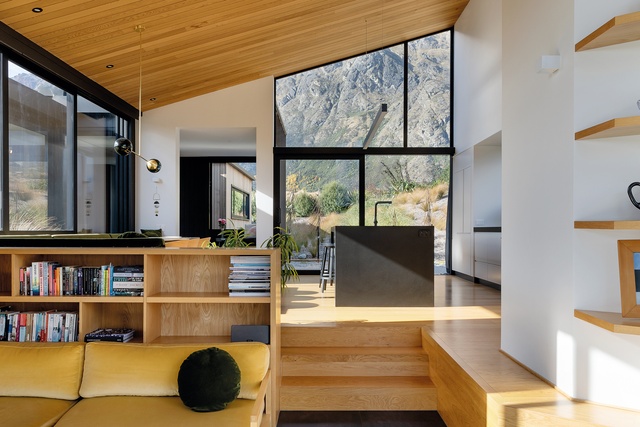
A landing of sorts is created between the entrance space and the living area. This is what Barnes calls the family’s ‘kumbaya’ or ‘zen’ space: a tiled area with a day-bed and an internal garden, which visually connects with the planting outside.
“This room has a sense of internal reflection,” explains Taylor. “It’s a nice contrast with the rest of the house as, when you go to the edges of the other rooms, it’s more about looking outside.”
A multi-purpose den and guest room sits adjacent. This room has an adjoining bathroom and can be used for visiting relatives but, also, has the capability to be shut off from the rest of the house so the home-owners’ sons can enjoy some separation as they grow older.
“Instead of a big house that has everything we think we need, we wanted a house that was the right size for us,” says Barnes. “So the den is multi-use, since we don’t have guests all the time. And the bedrooms are small but we played with the horizontal and vertical so they have space
but not so much of a large footprint. We also consider the outside spaces to be rooms.”
Jack’s Point experiences some strong winds so the house is set up with outdoor rooms on both sides, providing sheltered spots depending on the direction of the gale. An outdoor fireplace is tucked into the terrace adjoining the lower level of the living area, making this a spot from which to enjoy the scenery in all seasons.
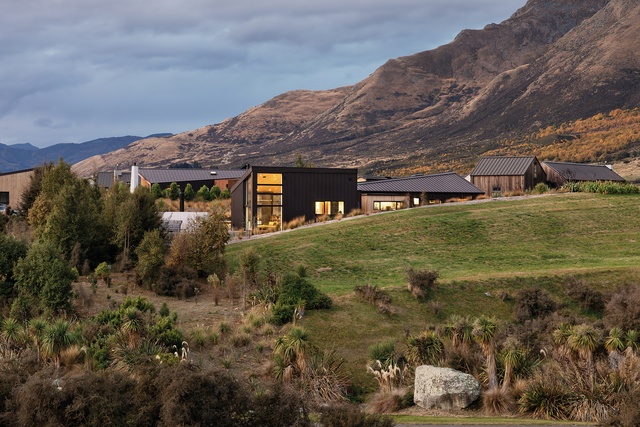
Lighting plays a big part in the interior design. A brass and handblown glass Line Pendant by Douglas & Bec takes pride of place over the dining table, echoed by a Line table lamp in the living area. Resident fixtures feature in the den, lounge and zen space. “We tend to prefer a neutral or monochrome palette inside and to let the artwork and lights provide splashes of colour,” says Barnes.
This is particularly true of the bedroom wing, where black joinery creates an effective contrast with the white walls. Soft furnishings throughout are minimised to a palette of warm greens and yellows, with velvets providing a comforting texture in the den and dining area.
The children’s bedrooms feature custom-made bunk beds, each of which has a desk below and a loft play area as well as a sleep space above. The master bedroom at the end of the wing features a customised door, which follows the angle of the ceiling and also folds back so the view beyond can be seen from all the way down the corridor. Barnes’ office is also located in this wing, with low windows that allow him to take in the view when seated at his desk.
With all the largeness of the outdoor world, this house lies low, providing a series of modest, yet contemporary and comfortable spaces that are the ‘right size’ for this Queenstown family.
This article first appeared in Urbis magazine.


